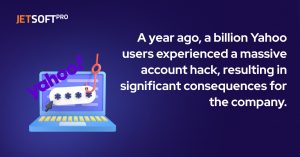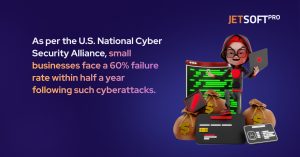In today’s hyper-connected digital world, the success of startup software solutions is intertwined with their ability to ensure robust cybersecurity. The soaring reliance on software for various business operations has made startups lucrative targets for cybercriminals seeking to exploit vulnerabilities. Neglecting cybersecurity can lead to dire consequences, ranging from data breaches and financial losses to reputational damage that can spell the demise of a promising startup. This article delves into the critical need for cybersecurity in startup software solutions, shedding light on the evolving landscape and providing actionable insights to establish strong defenses against cyber threats.
Understanding the Ftest Landscape
The cybersecurity landscape is ever-changing, with new threats emerging alongside technological advancements. Startups are particularly susceptible due to limited resources and the perception that they might not be primary targets. However, this couldn’t be further from the truth. Cyberattacks on startups have been on the rise, ranging from phishing attacks that deceive employees into divulging sensitive information to ransomware attacks that hold critical data hostage for hefty ransoms. Data breaches, the crown jewel of cybercriminal endeavors, can lead to severe legal and financial repercussions, not to mention shattered customer trust. It’s paramount for startups to recognize these risks and take proactive measures to safeguard their software solutions.

Building a Strong Foundation: Secure Software Development
Security cannot be an afterthought in the software development process. It must be woven into the fabric of every line of code written. Secure software development entails adhering to principles that mitigate vulnerabilities, such as following OWASP (Open Web Application Security Project) guidelines. These principles encompass practices like input validation, output encoding, and proper error handling. Regular code reviews and vulnerability assessments are pivotal components of this process. Regularly scrutinizing code for weak points and addressing them promptly ensures that potential avenues of exploitation are sealed before they’re exploited.
Access Control and Authentication
Protecting software solutions involves controlling who has access and ensuring that the right individuals are authenticated securely. Robust user authentication mechanisms are essential. Passwords, once the stalwart of security, are no longer sufficient on their own. Multi-factor authentication (MFA) bolsters defenses by requiring users to provide multiple forms of verification. Role-based access control (RBAC) takes this a step further, allowing only authorized personnel access to specific system components or data. By limiting access based on user roles, even if one set of credentials is compromised, the potential damage is contained.
Data Protection and Encryption
The backbone of cybersecurity lies in safeguarding sensitive data. Whether it’s customer information, proprietary algorithms, or financial records, encrypting data is a non-negotiable practice. Encryption transforms data into a coded format that can only be deciphered by authorized parties. This applies both to data in transit (traveling between devices or networks) and data at rest (stored on servers or devices).
Encryption protocols such as SSL/TLS (Secure Sockets Layer/Transport Layer Security) play a vital role in securing data during transmission over the internet. These protocols ensure that any data exchanged between users and your software remains confidential and cannot be easily intercepted by malicious actors. For data at rest, Advanced Encryption Standard (AES) is widely used for its robust security features.
However, encryption is only as strong as its keys. Proper key management is crucial to ensure that encryption and decryption keys are securely stored and accessed only by authorized personnel. This prevents unauthorized access to sensitive information even if an attacker gains access to the encrypted data. Explore our article titled “The Role of Data Analytics in Driving Startup Growth” to delve deeper into the world of data analytics and its catalytic potential for startups. We’ll delve into everything from the core concepts of data analytics to the tools and technologies propelling it forward.
Regular Software Updates and Patch Management
The software landscape is in perpetual motion, with new features and updates introduced regularly. However, these updates are not just about improving functionality; they’re often critical for security. Outdated software and libraries are prime targets for cybercriminals who exploit known vulnerabilities to gain unauthorized access or control.

Regular software updates and patch management are essential to stay ahead of cyber threats. These updates address vulnerabilities and weaknesses discovered since the software’s release. Ignoring updates leaves a software solution susceptible to attacks that can exploit those known vulnerabilities.
Network Security Measures
A startup’s digital infrastructure is akin to a fortress, and firewalls are its first line of defense. Firewalls act as barriers that filter incoming and outgoing network traffic, allowing only legitimate and authorized data to pass through. Alongside firewalls, intrusion detection systems (IDS) monitor network traffic for suspicious patterns or activities that may indicate a breach.
Segmenting networks adds an extra layer of security. By dividing a network into smaller segments, a potential breach is contained within that segment, limiting the impact. This practice is especially effective in preventing lateral movement by attackers within the network.
Monitoring network traffic is not just about setting up defenses and hoping for the best. It’s an ongoing process that requires continuous vigilance. Regularly analyzing network traffic for anomalies helps detect potential breaches early, allowing for swift action to mitigate the damage.
Employee Training and Awareness
No cybersecurity strategy is complete without addressing the human element. Employees are often the first line of defense against cyber threats, but they can also be the weakest link if not properly trained. Phishing attacks, where attackers deceive individuals into divulging sensitive information, are a prime example of this vulnerability.
Regular employee training and awareness programs are essential to educate staff about the dangers of social engineering, phishing, and safe computing practices. When employees can recognize suspicious emails or behavior, they become an active defense mechanism against cyber threats.
Incident Response and Business Continuity
Even with the best cybersecurity measures in place, no system is entirely immune to breaches. This is where an effective incident response plan comes into play. An incident response plan outlines the steps to take when a security breach occurs. It involves identifying the breach, containing the damage, eradicating the threat, and recovering systems and data. The plan should also designate roles and responsibilities, establish communication protocols, and ensure legal and regulatory compliance during the response process.
However, an incident response plan is only as good as its real-world effectiveness. Regular drills and testing are essential to validate and fine-tune the plan. These exercises simulate various breach scenarios, allowing teams to practice their response in a controlled environment. By identifying strengths and weaknesses through testing, a startup can ensure that its incident response plan is agile and capable of handling unexpected challenges.
Beyond incident response, startups must also consider business continuity. A business continuity plan ensures that operations can continue despite security incidents. It involves identifying critical functions, establishing backup systems and data repositories, and defining strategies for maintaining essential services during disruptions. This plan minimizes downtime and enables the startup to recover quickly and efficiently, mitigating financial and reputational damage.
Third-Party Security Considerations
In today’s interconnected digital ecosystem, startups often rely on third-party integrations and services to enhance their software solutions. However, each integration introduces a potential vulnerability point. This is why assessing third-party security is of paramount importance. A single compromised integration can serve as a backdoor for attackers into your system.
Startup founders should practice due diligence when selecting vendors and partners. This involves thoroughly evaluating their security practices and reviewing their track record with cybersecurity incidents. Additionally, conducting security assessments, including vulnerability scans and penetration tests, can provide insights into the potential risks associated with third-party integrations. The goal is to ensure that your chosen partners share your commitment to cybersecurity.
Compliance and Regulatory Considerations
Compliance with industry-specific regulations and compliance standards is more than just a box to check; it’s a legal and ethical obligation. Depending on the nature of your startup’s software solution, you might be subject to various regulations that mandate data protection, privacy, and security measures. Non-compliance can result in severe penalties, legal disputes, and a loss of customer trust.
Understanding the relevant regulations and standards is the first step. Common standards include GDPR (General Data Protection Regulation) for the EU, HIPAA (Health Insurance Portability and Accountability Act) for healthcare, and PCI DSS (Payment Card Industry Data Security Standard) for payment card data. Once identified, startups must implement the necessary measures to adhere to these regulations. This might involve data encryption, secure user authentication, and comprehensive audit trails.
Conclusion
In the rapidly evolving world of technology, cybersecurity has become a non-negotiable factor for the success of startup software solutions. Our journey through the intricacies of cybersecurity best practices highlighted the integral role it plays at every stage.
From understanding cybersecurity’s critical importance and the evolving threat landscape, we moved to building secure software through principles like secure coding and access control. Encryption emerged as the shield for sensitive data, with encryption protocols and key management as its backbone.
Stressing the significance of regular updates and patch management, we emphasized how neglecting these can lead to vulnerabilities. Network security measures, combined with employee training, fortified the defenses.
Looking beyond, incident response and business continuity plans showcased the readiness to combat breaches, while third-party security considerations and regulatory compliance underscored the importance of holistic security.
This exploration reinforces the notion that cybersecurity isn’t just a protective layer but an integral thread woven into the fabric of startup software solutions. Embracing these practices empowers startups to safeguard their creations, inspire trust, and position themselves for enduring success in the digital landscape.

